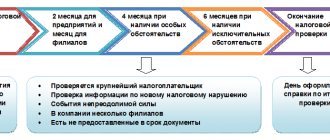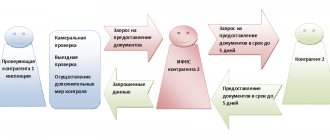General violations in the field of labor law
On January 1, 2015, Federal Law No. 421 of December 28, 2013 came into force, which introduced changes to the Code of Administrative Offenses: it divided violations of labor legislation into different elements of administrative offenses, increased liability, and increased penalties.
Most often, in the reports based on the inspection results, inspectors note the following general violations of labor legislation:
- the employer approves local regulations without taking into account the opinion of the elected body of the primary trade union organization;
- the employment contract does not include a record of the employee receiving his copy in hand (Article of the Labor Code of the Russian Federation);
- there is no seal or wax seal on the book of accounting for the movement of work books or the book of records of work book forms - this is an outdated, but not yet canceled requirement (Resolution of the Government of the Russian Federation dated April 16, 2003 No. 225);
- in violation of the requirements of Art. 140 of the Labor Code of the Russian Federation, settlements with employees were not carried out on the day of their dismissal;
- in violation of Art. 236 of the Labor Code of the Russian Federation, monetary compensation for delays in payment when dismissing employees is not accrued and is not made;
- vacation records are not kept in the employee’s personal card (Resolution of the State Statistics Committee of Russia dated January 5, 2004 No. 1);
- personal cards of employees do not contain signatures confirming familiarization with records of hiring, transfers and dismissals (clause 12 of the Decree of the Government of the Russian Federation of April 16, 2003 No. 225).
Penalties
| Violation of labor legislation, unless otherwise provided by Parts 3, 4, 6 of Art. 5.27 or Art. 5.27.1 Code of Administrative Offenses of the Russian Federation (part 1, 2 of Article 5.27 Code of Administrative Offences) | For officials | Warning or fine from 1,000 to 5,000 rubles. |
| For individual entrepreneurs | Fine from 1,000 to 5,000 rubles. | |
| For legal entities | Fine from 30,000 to 50,000 rubles. |
Procedure for assigning a check
The basis for conducting an inspection by the labor inspectorate in relation to a specific employer is the order of the manager (deputy manager), the standard form of which was approved by order of the Ministry of Economic Development dated April 30, 2009 N 141.
The order must indicate the following data (Article 14 of Federal Law No. 294-FZ):
- the name of the state labor inspection of the relevant constituent entity of the Russian Federation, as well as the date and number of the order;
- type and form of inspection carried out;
- name of the legal entity or full name of the individual entrepreneur;
- address(es) of the employer’s location (at this address the inspection will be carried out if it is an on-site inspection);
- Full name and position of the person authorized to conduct the inspection, as well as invited experts and representatives of expert organizations;
- the purpose and objectives of the inspection (if the inspection is unscheduled, then the details of the employee’s complaint are indicated).
- the subject of the inspection, the legal basis for its conduct, regulatory legal acts, the mandatory requirements of which are subject to inspection, and a list of control measures necessary to achieve the goals and objectives of the inspection;
- the duration of the inspection, as well as its start and end dates
- list of relevant administrative regulations;
- documents that must be submitted to the inspector for the inspection.
LEGAL SUPPORT OF ORGANIZATIONS
A copy of the order is certified by a seal and handed over to the manager (authorized person) against signature by the inspector conducting the inspection. The specified basis for conducting an inspection is the same for both scheduled and unscheduled inspections.
Violation of wage rules
This is the most popular type of violations detected during GIT inspections. Most often, employers are caught for non-payment of wages and other charges, incomplete payment, violation of payment deadlines, and also for charging a salary less than that provided by law. In 2021, liability for violations in this area was once again tightened ( Federal Law No. 272-FZ dated July 3, 2016 ): for organizations, fines can amount to up to 50,000 rubles. Repeated violations are punished much more severely - up to disqualification, that is, deprivation of the head of the enterprise of the right to hold a position for a period of one to three years.
Penalties
| For officials | Fine from 10,000 to 20,000 rubles. |
| For individual entrepreneurs | Fine from 1,000 to 5,000 rubles. | |
| For legal entities | Fine from 30,000 to 50,000 rubles. | |
| Repeated violation of the legislation on wages, that is, the person was previously punished for a similar offense (Part 7 of Article 5.27 of the Code of Administrative Offenses of the Russian Federation) | For officials | Fine from 20,000 to 30,000 rubles. or disqualification from one to three years. |
| For individual entrepreneurs | Fine from 10,000 to 30,000 rubles. | |
| For legal entities | Fine from 50,000 to 100,000 rubles. |
As a rule, the head of the organization or an employee temporarily replacing him is held accountable for violations in the field of wages, but the chief accountant can also be held accountable if his guilt is established in the untimely payment of vacation pay or delayed wages.
Inspections can be scheduled and unscheduled (Articles 9, 10 of Law No. 294-FZ)
A planned inspection is carried out by the labor inspectorate at a certain frequency and only on the basis of an approved plan. An unscheduled inspection is carried out by the labor inspectorate, regardless of the time of the previous inspection, if appropriate grounds arise.
Scheduled inspections are comprehensive in nature and are carried out to establish the employer’s actual compliance with the requirements of labor legislation in general or individual norms, sections, for example, remuneration or dismissal procedures. An unscheduled inspection, unlike a planned one, is one-time in nature, as it is carried out based on requests from citizens (employees) about violations of labor laws by the employer.
Violations in the field of labor protection
Compliance with labor safety requirements is the responsibility of the company's management. For negligent attitude to the requirements for organizing safe conditions, the employer may be brought to administrative and even criminal liability. The same Federal Law of December 28, 2013 No. 421 (came into force on January 1, 2015) highlighted all violations in the field of labor protection in a special article - Art. 5.27.1 Code of Administrative Offences.
It contains a separate paragraph (clause 2 of Article 5.27.1 of the Code of Administrative Offences ) for violations of the procedure for conducting a special assessment of working conditions. During the inspection, the State Labor Inspectorate pays special attention to whether a representative of the trade union organization was included in the commission for conducting the special labor assessment, and whether compensation was awarded for harmful and dangerous working conditions. In addition, the employer is obliged to familiarize employees with the results of the assessment within 30 days against signature and post the results of the special assessment on the organization’s website.
Inspectors also have many questions about allowing employees to work (Clause 3, Article 5.27.1 of the Administrative Code). Some of the most common mistakes include:
- absence or improper maintenance of briefing logs, lack of a training program;
- failure to conduct training and knowledge testing on labor protection or training in non-accredited organizations (Procedure for training on labor protection and testing knowledge of labor protection requirements for employees of organizations, approved by Resolution of the Ministry of Labor and the Ministry of Education of the Russian Federation dated January 13, 2013 No. 1/29);
- lack of a commission to test knowledge of labor protection;
- absence of a list of contingents and a name list of persons subject to mandatory medical examination (violation of Order of the Ministry of Health and Social Development of Russia dated April 12, 2011 No. 302n);
- failure to conduct mandatory preliminary/periodic/pre-trip medical examinations (Article 213 of the Labor Code of the Russian Federation);
- failure to conduct mandatory psychiatric examinations in specialized clinics that have accreditation (Article 213 of the Labor Code of the Russian Federation, Decree of the Government of the Russian Federation dated April 28, 1993 No. 377 “On the implementation of the Law of the Russian Federation “On psychiatric care and guarantees of the rights of citizens during its provision” as amended on September 23. 2002).
Check procedure
The procedure for conducting an inspection depends on its form. It can be documentary or visiting. The documentary form of the inspection means that the inspector will examine only the employer’s documents without visiting him. An on-site inspection also implies its conduct on the basis of documents and written information provided by the employer, but it will already take place at the employer’s location.
ACCOUNTING
During a documentary inspection, the inspector first examines the documents that are at his disposal, for example, reports of previous inspections or previously issued orders. In the absence or insufficiency of such documents for conducting an inspection, a request is sent to the employer with a requirement to provide the necessary documents, explanations and information in writing (clauses 49, 50 of Administrative Regulation No. 354n). The specific list of requested documents and information is determined based on the purpose of the inspection, as well as depending on the volume of documents already available to the labor inspectorate.
The employer is obliged to personally submit the requested documents in the form of copies certified by the seal and signature of the manager (authorized representative) along with all explanations no later than 10 working days from the date of receipt of the request (Part 5 of Article 11 of Law No. 294-FZ).
The submitted documents are usually examined by the inspector immediately in the presence of the employer. However, in some cases this may take several days. When the reliability of the information contained in the documents submitted by the employer raises reasonable doubts in the inspector, or this information contains errors or contradictions, the labor inspector requests additional explanations in writing, which must be submitted within ten working days.
An on-site inspection begins with the presentation of an official ID by a labor inspector, since only the inspector specified in the order to conduct the inspection has the right to conduct it. Please note that inspectors do not conduct searches of the employer, seizure of documents, confrontations or interrogations of witnesses. The procedure for conducting an on-site inspection is in many ways similar to a documentary one. As part of the on-site inspection, the labor inspector checks the information contained in the documents and written information provided by the employer, and also checks their compliance with the actual relationship with employees and their working conditions. The employer’s responsibility is to provide access to its territory for inspectors and experts conducting the inspection, as well as to provide the opportunity to directly examine the requested original documents.
PROCEDURE FOR APPEALING THE RESULTS OF A LABOR INSPECTION INSPECTION
What is a risk-based approach
We have already mentioned that until July 1, 2021, only firms and individual entrepreneurs that belong to the moderate risk category are subject to inspection according to the checklists contained in the labor inspection checklists, and from July 1 - all others. Thus, an approach is applied that is based on the degree of risk (Part 1, Article 8.1 of the Federal Law “On the Protection of Rights...” dated December 26, 2008 No. 294). Let's figure out what it is.
The method is that inspectors use a risk grading system during inspection. This gradation depends on how serious the danger may be caused by non-compliance with mandatory requirements. It is the GIT that determines the danger category of organizations and individual entrepreneurs, using the rules approved by Government Decree No. 806 of August 17, 2016. The number of possible scheduled inspections also depends on the risk category.
In the field of labor legislation, the following gradation of risks is applied:
- High. For such inspectees, only one inspection is possible every 2 years.
- Significant. One inspection per 3 years is possible.
- Average. One inspection is possible every 5 years.
- Moderate. One inspection is possible every 6 years.
- Short. Scheduled inspections are not carried out at all.
Thus, it makes sense to check whether the company falls into the latter category. It is possible that there will be no checks based on checklists.
As already mentioned, you can send a request to Rostrud and find out which risk group the company or individual entrepreneur belongs to. The answer is given within 15 days. If the person being inspected is classified as high or significant risk, such data is published on the GIT website. Information is available starting July 1 of the year preceding the year of inspection.
It is possible to send an application to Rostrud to reduce the risk class, if there are grounds for this. It is being considered by Rostrud officials. The decision can be challenged, for example, in administrative proceedings (CAS RF).
What list of checklists is accepted by the State Transport Inspectorate?
Questionnaires are published in accordance with specific topics. The total number of GIT checklists is 107. Here are some of them, as an example:
- issues of termination of an employment contract (sheet No. 4);
- salary issues (sheet No. 7);
- issues of conducting a special assessment of working conditions (SOUT) (sheet No. 21);
- training on occupational safety issues (sheet No. 28).
The full list of questions can be found by studying Order No. 655, and all documents can be downloaded from the link at the end of the article.
Test questions look like a table divided into several columns:
- the first of them contains item numbers;
- the second reflects the content of specific requirements;
- in the third - regulations governing the relevant obligation;
- in the fourth - answers to the question posed (yes, no, does not apply).
Let's give an example. The questionnaire, which is contained in Appendix No. 5 to Order No. 655, is intended to make it possible to check whether the working hours and recording of working hours are observed in the audited company or individual entrepreneur. An example question looks like this:
| № | Questions | Legal entity details | Answers on questions | ||
| Yes | No | Not applicable | |||
| 1 | Are working hours established? | Part 1 art. 100 Labor Code of the Russian Federation | |||
To be prepared for the test, you need to study the content of specific questions in advance and answer them. If everything is complied with, then there will be no grounds for prosecution.
Introduction of Rostrud checklists: from what date the rules in question begin to apply
The list of checklists for checking the State Labor Inspectorate was put into effect by Order of Rostrud dated November 10, 2021 No. 655. It should be noted that from the date of entry into force of the Order (February 4, 2021), questionnaires are used in the case of scheduled inspections in relation to not all companies and individual entrepreneurs, but only those that fall into the moderate risk category. To understand which category a particular company belongs to, you can submit a request to the territorial branch of Rostrud at the place of registration, or check the data on their official website.
As for other categories, inspections are carried out using checklists from July 1, 2021. The GIT checklists used from this date are approved by the same Order No. 655, which means that verification actions during scheduled audits from July 1, 2021 are carried out in relation to any companies and individual entrepreneurs, and not just those belonging to the moderate risk category.
It is important to understand that questionnaires can only be used during routine inspections. If inspection activities take place outside the plan, the requirements for organizations and individual entrepreneurs are the same, but inspection sheets are not officially applied. In any case, if all the requirements for those being inspected, specified in the entered questionnaires, are met, this is reason to believe that there are no grounds for bringing to administrative responsibility.






